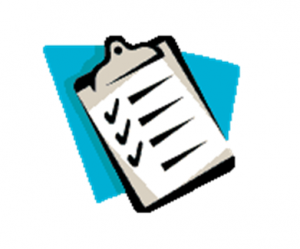Can a Checklist Be a Procedure?

In various fields such as medicine, aviation, construction, and manufacturing, checklists are widely recognized as valuable tools for enhancing safety, efficiency, and accuracy. However, some debate exists regarding the classification of a checklist as a procedure. To unravel this intriguing topic, it is essential to first grasp the concept of a checklist and understand its function within different contexts. Can a checklist be a procedure?
The Checklist Concept
A checklist is essentially a sequential list of items or tasks that serve as a guide, ensuring that critical steps are completed in a systematic manner. Whether it is a simple to-do list or a comprehensive audit checklist, its purpose is to facilitate consistency, reduce errors, and improve outcomes. By breaking down complex processes into manageable steps, checklists can help individuals navigate intricate procedures more effectively.
Defining a Checklist
At its core, a checklist serves as a tool to verify completion, often acting as a reminder of essential actions to be taken. The items on a checklist can range from specific tasks to general guidelines, depending on the complexity and purpose of the procedure. Unlike a procedure, a checklist is not an in-depth set of instructions detailing each step but rather a concise overview of necessary actions.
For example, imagine a restaurant kitchen preparing for the dinner rush. The checklist may include tasks such as checking inventory, prepping ingredients, and cleaning workstations. By following this checklist, the kitchen staff can ensure that all necessary preparations are completed before the first orders come in.
In a different context, consider a software development team working on a new feature release. Their checklist may include tasks such as code review, testing, and documentation. By following this checklist, the team can ensure that all necessary steps are taken to deliver a high-quality feature to users.
Importance and Uses of Checklists
The significance of checklists resides in their ability to aid human cognition by serving as cognitive artifacts. By externalizing information and prompting memory retrieval, checklists reduce the burden on individuals’ working memory, leading to fewer omissions or errors. Checklists find their utility across diverse domains, including healthcare, aviation, project management, and quality control, to name a few.
In healthcare settings, checklists play a crucial role in patient safety. For example, in an operating room, a surgical safety checklist can help ensure that all necessary precautions are taken before, during, and after a procedure. This includes verifying patient information, confirming the correct surgical site, and ensuring the availability of essential equipment and supplies. By following this checklist, healthcare professionals can minimize the risk of errors and improve patient outcomes.
In project management, checklists help keep teams organized and ensure that all necessary tasks are completed. For instance, a construction project checklist may include tasks such as obtaining permits, scheduling inspections, and coordinating subcontractors. By following this checklist, project managers can effectively track progress, identify potential bottlenecks, and ensure timely completion of the project.
Examples of Effective Checklists
Several high-profile examples exemplify the power of checklists in increasing compliance, reducing errors, and improving outcomes. One such example is the World Health Organization’s surgical safety checklist. This checklist, consisting of essential preoperative, intraoperative, and postoperative steps, has demonstrated remarkable success in reducing morbidity and mortality rates among surgical patients globally.
Another domain where checklists have proven indispensable is the aviation industry. Pre-flight checklists are integral to ensuring the safety of flight operations by systematically verifying critical systems, controls, and procedures. Pilots heavily rely on these checklists to maintain safe and efficient aircraft operations.
Furthermore, checklists are widely used in the hospitality industry to ensure exceptional customer service. Hotel staff often follow checklists to ensure that rooms are properly cleaned and stocked with amenities before guests arrive. By using checklists, hotels can maintain consistent standards and provide a pleasant experience for their guests.
Overall, checklists are versatile tools that can be adapted to various situations and industries. Their effectiveness lies in their ability to provide structure, improve efficiency, and enhance overall performance. By incorporating checklists into our daily routines and workflows, we can streamline processes, reduce errors, and achieve better outcomes.
Exploring the Nature of Procedures
A procedure, unlike a checklist, encompasses a more comprehensive set of instructions or guidelines. It outlines the specific steps, methods, and criteria required to complete a task or achieve a particular outcome. Procedures often delineate requirements for quality, safety, compliance, or consistency within an organization or industry.
What is a Procedure?
A procedure is a prescriptive document that details the specific actions to be taken, the order in which they must occur, and any relevant guidelines or considerations. It serves as a blueprint for ensuring consistency and standardization in performing tasks or achieving desired results. Let’s dive deeper into understanding the intricacies of procedures and their significance in various fields.
The Role of Procedures in Different Fields
Procedures play a vital role in various sectors, such as healthcare, manufacturing, finance, and customer service. In healthcare, for instance, medical professionals follow standardized procedures to perform surgeries, administer medication, or provide patient care. These procedures ensure uniformity, mitigate risks, and maintain high-quality care.
Moreover, healthcare procedures also encompass guidelines for handling emergencies, infection control, and patient confidentiality. These guidelines are crucial in maintaining the safety and well-being of both patients and healthcare providers.
Similarly, in manufacturing, procedures guide workers in executing production processes, maintaining quality control, and adhering to safety protocols. They provide a structured framework for efficient and effective operations. Manufacturing procedures may involve steps for equipment setup, raw material handling, production line maintenance, and product testing.
Furthermore, procedures in the finance industry govern various activities, such as internal audits, risk management, and financial reporting. These procedures are designed to ensure compliance with regulatory requirements, prevent fraud, and maintain transparency in financial operations.
In customer service, procedures outline the steps to handle customer inquiries, complaints, and service requests. They provide guidelines for effective communication, problem-solving, and maintaining customer satisfaction.
Procedure Development and Implementation
Developing an effective procedure involves careful analysis of the desired outcome, identification of critical steps, and consideration of potential risks or challenges. Procedures should be continuously reviewed and updated to reflect evolving best practices, industry regulations, and organizational needs. Moreover, effective training and consistent implementation are crucial to ensure that procedures are followed accurately and consistently.
During the development stage, subject matter experts collaborate to define the procedural requirements, document the necessary steps, and incorporate any relevant industry standards or regulations. This collaborative approach ensures that the procedures are comprehensive, practical, and aligned with the organization’s goals.
Once the procedures are documented, they undergo a rigorous review process involving stakeholders from different departments. This review helps identify any gaps or ambiguities in the procedures and ensures that they are clear, concise, and easy to understand.
After the review process, the procedures are ready for implementation. Training sessions are conducted to familiarize employees with the procedures and ensure they understand their roles and responsibilities. Regular audits and performance evaluations are conducted to monitor compliance and identify areas for improvement.
In conclusion, procedures are essential tools for achieving consistency, standardization, and efficiency in various industries. They provide a structured approach to accomplish tasks, mitigate risks, and maintain quality. By following well-defined procedures, organizations can enhance productivity, meet regulatory requirements, and deliver superior products or services.
The Intersection of Checklists and Procedures
Checklists and procedures are not mutually exclusive; rather, they often intersect and complement each other in practice. While procedures provide detailed instructions and guidelines, checklists act as an aid to ensure that critical steps are not inadvertently omitted or overlooked during the execution of a procedure.
How Checklists Complement Procedures
Checklists serve as a cognitive tool to support individuals in correctly adhering to procedures. By visually representing key actions, they enhance situational awareness and help minimize the risk of errors. Checklists act as memory aids, reducing reliance solely on human memory and attention, which are prone to fatigue or distraction. For complex or unfamiliar procedures, checklists can be invaluable in enhancing execution and maintaining consistency.
Can a Checklist Replace a Procedure?
While checklists play a crucial role in supporting procedures, it is important to recognize their limitations. Checklists alone cannot replace comprehensive procedures, particularly in situations where intricate decision-making or judgment is required. Procedures provide the necessary context and specific guidance, informing individuals of not just what needs to be done, but also why and how. Checklists act as powerful complements but are not substitutes for well-defined procedures.
Case Studies: Checklists as Procedures
To fully appreciate the potential of checklists, it is worthwhile to examine real-world instances where checklists effectively fulfill the role of procedures. In the medical field, surgical safety checklists have revolutionized patient care and dramatically reduced surgical complications.
Medical Field: Surgical Safety Checklists
The surgical safety checklist, pioneered by Dr. Atul Gawande, has become a cornerstone of patient safety worldwide. By providing a standardized set of steps for preoperative, intraoperative, and postoperative care, these checklists ensure critical elements are not overlooked, such as confirming patient identity, preventing infection, and minimizing surgical errors. Surgical safety checklists truly embody the fusion of checklists and procedures, guiding healthcare professionals through complex surgeries while fostering patient safety.
Aviation Industry: Pre-flight Checklists
Pre-flight checklists epitomize the successful integration of checklists as procedures in the aviation industry. Pilots meticulously follow these checklists, covering everything from fuel checks to control surface inspections, to ensure the aircraft is in optimal condition before takeoff. By following these checklists, pilots systematically verify critical components and establish a safety net, reducing the risk of errors that could have catastrophic consequences.
Pros and Cons of Using Checklists as Procedures
Like any tool or technique, checklists as procedures have both advantages and potential drawbacks. Understanding these can inform decision-making when considering the implementation of checklist-based procedures within different environments.
Advantages of Checklist Procedures
One of the main advantages of using checklists as procedures is their ability to enhance standardization and quality control. Checklists ensure that critical steps are consistently followed, reducing the likelihood of errors or omissions that can compromise safety or outcomes. Checklists also help streamline processes, increase efficiency, and aid in training new personnel by providing a clear roadmap to follow.
Potential Drawbacks and Limitations
While checklists enhance procedural adherence, they may inadvertently create a reliance solely on the checklist rather than critical thinking or judgment. Blindly adhering to a checklist without understanding the underlying rationale can hinder adaptability or responsiveness in unexpected situations. Furthermore, checklists may not always capture the full complexity or nuances of a procedure, requiring continuous evaluation and refinement to remain effective.
Is a Checklist a Procedure?
In conclusion, checklists and procedures serve distinct but complementary roles. While checklists provide a valuable aid to ensure critical steps are not overlooked, procedures offer comprehensive guidelines for achieving consistent outcomes. By leveraging the strengths of both checklists and procedures, organizations can optimize performance, enhance safety, and promote quality across a wide range of industries. Recognizing the symbiotic relationship between checklists and procedures allows us to harness their combined power in achieving excellence.


















Leave a Reply